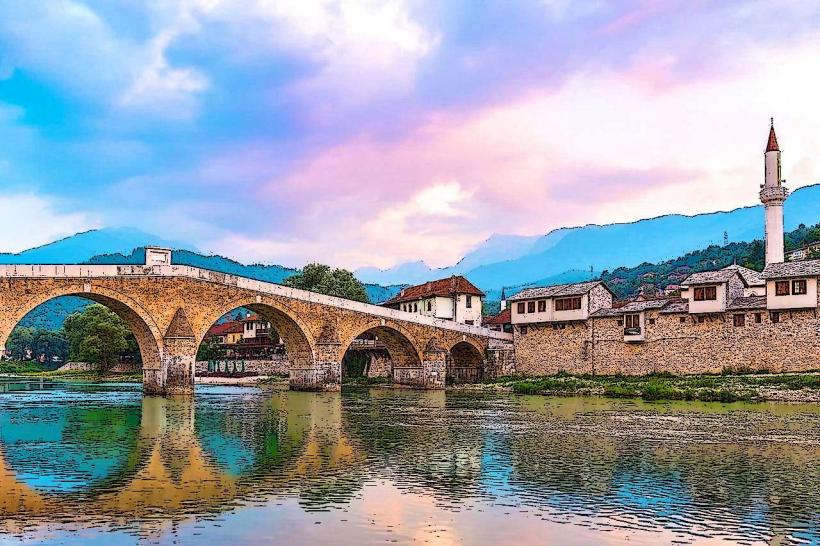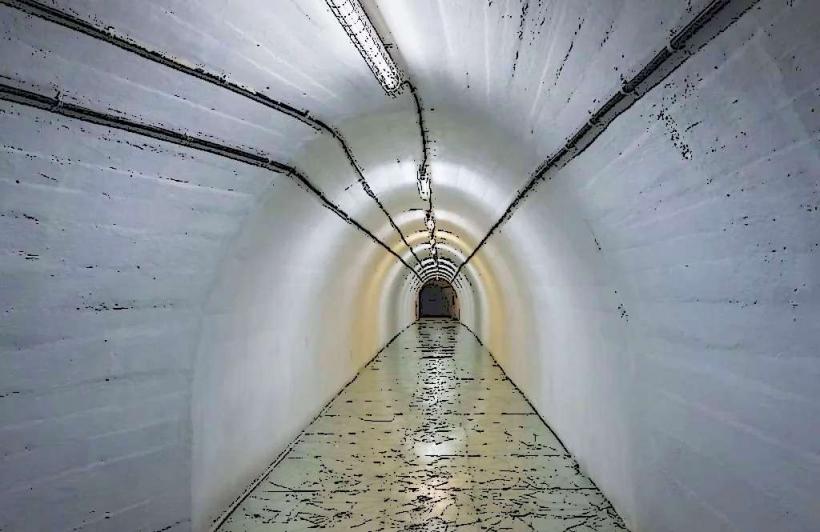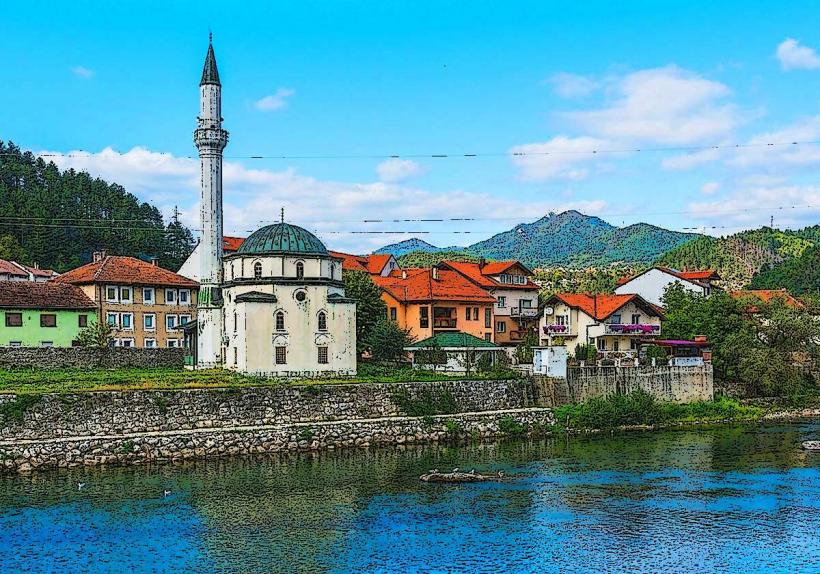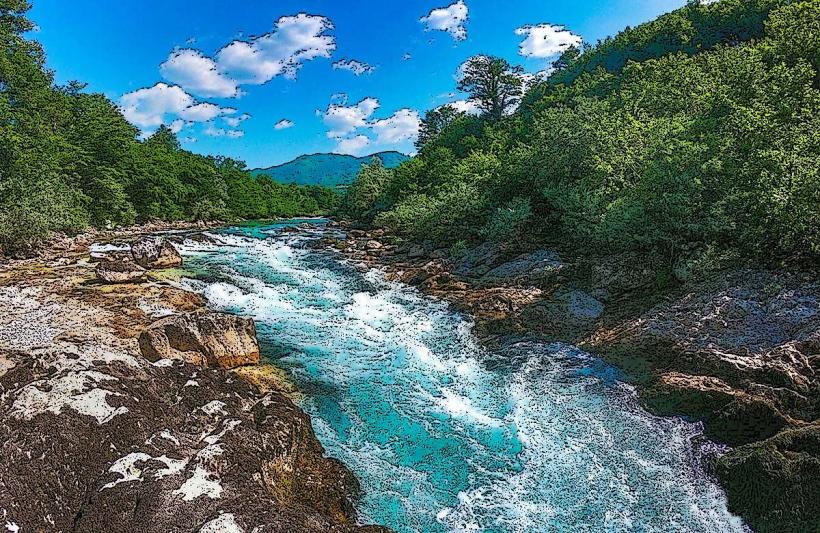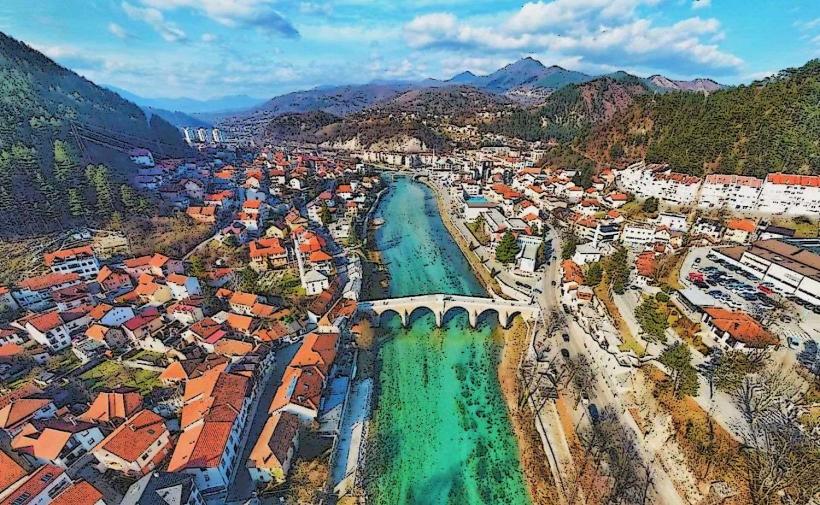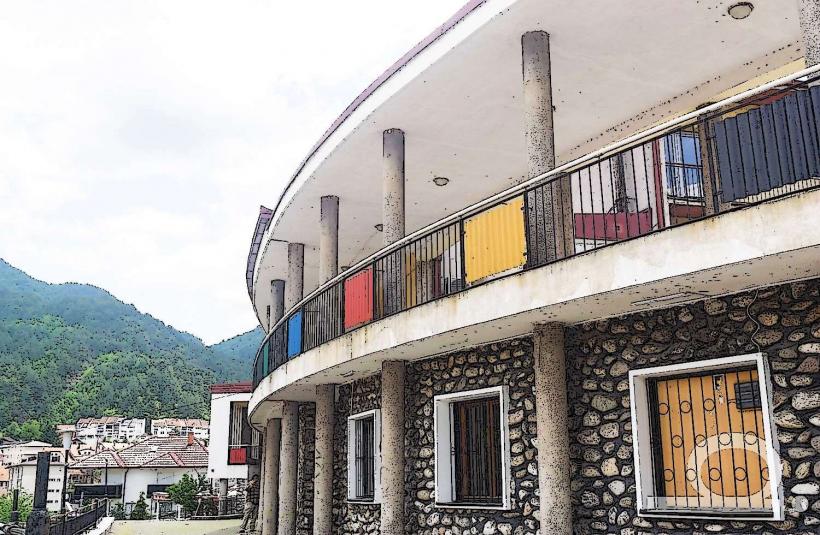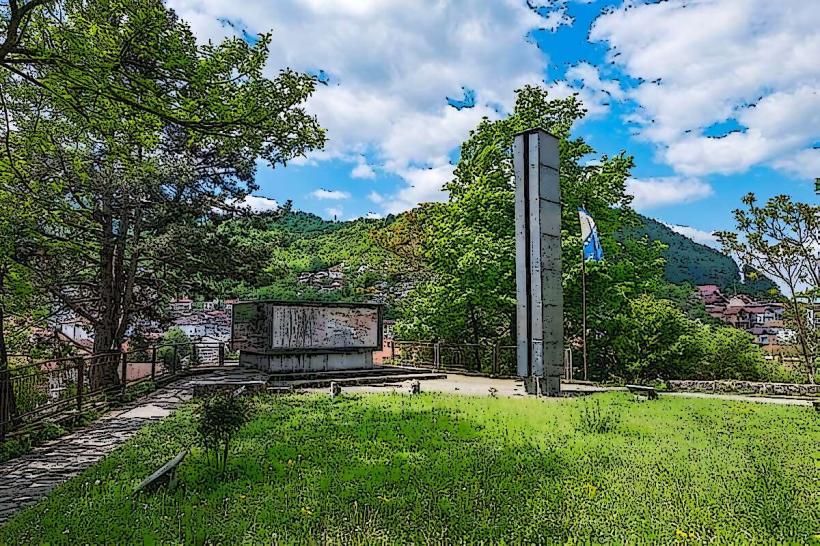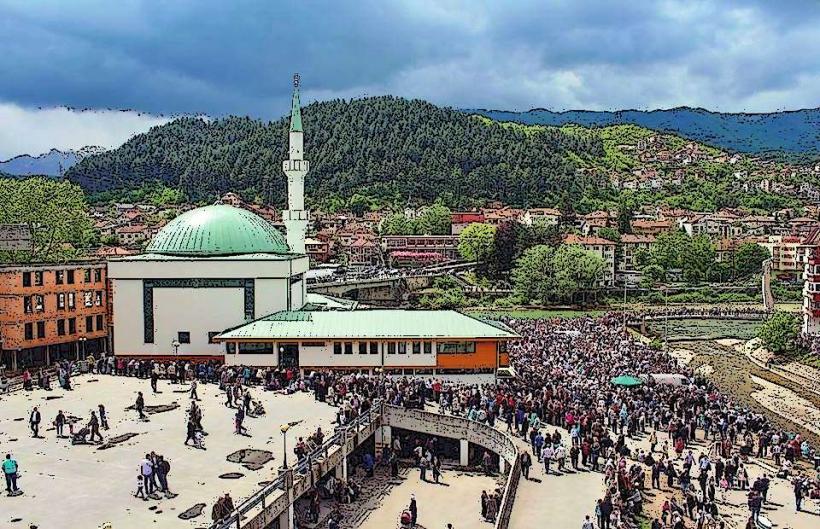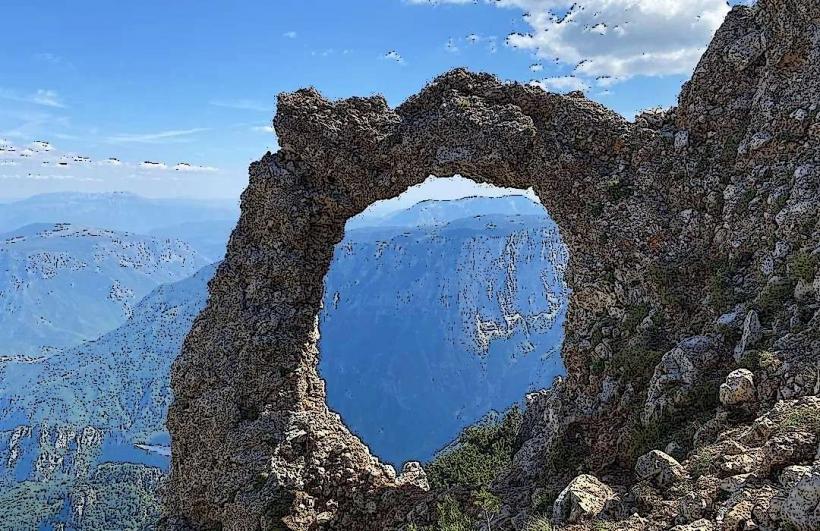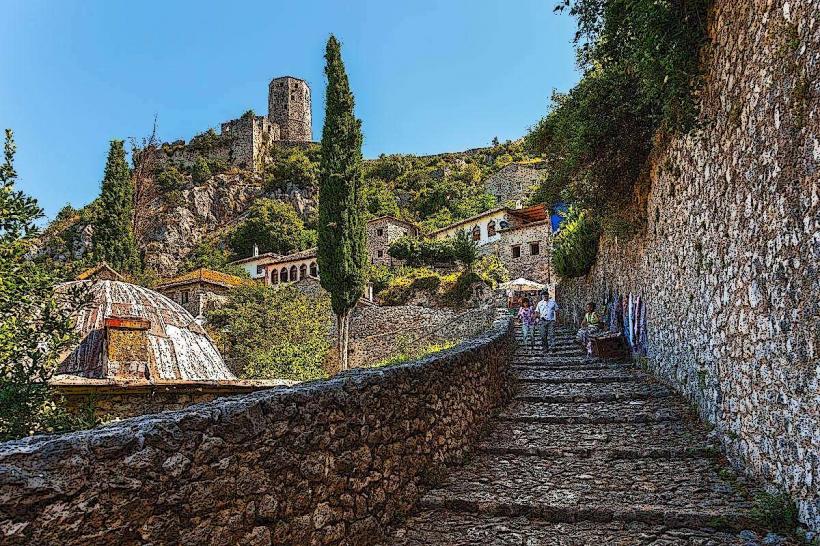Information
City: KonjicCountry: Bosnia and Herzegovina
Continent: Europe
Konjic is a town located in the central part of Bosnia and Herzegovina, situated in the Herzegovina-Neretva Canton of the Federation of Bosnia and Herzegovina entity. It lies on the Neretva River, surrounded by mountainous terrain, and serves as a vital transportation hub connecting the central part of the country with the southern regions. With a population of around 30,000, Konjic is a smaller town but has significant historical, cultural, and natural importance in the country.
Geography and Climate
Konjic is positioned at an altitude of about 200 meters (656 feet) above sea level, nestled between the Neretva River to the east and the towering Jablanska Planina mountains to the west. The town is approximately 50 kilometers (31 miles) southeast of Sarajevo, and it lies on the main route connecting the capital with the southern regions of Bosnia and Herzegovina, including Mostar and Neum.
The climate in Konjic is typically continental, with cold winters and hot, dry summers. In winter, temperatures can drop below freezing, while summer highs often reach 30°C (86°F). Spring and autumn are pleasant, with moderate temperatures making them ideal for outdoor activities and exploring the natural beauty of the area.
History
Konjic has a long history, with settlement evidence dating back to Roman times. The town has seen various civilizations and empires shape its development, from the Romans to the Ottoman Empire and later the Austro-Hungarian Empire. Konjic has always been a strategic location, both militarily and economically, due to its position along the Neretva River.
Roman and Medieval History: The area around Konjic was inhabited during the Roman Empire, with the Neretva River serving as a vital route for trade and military operations. In the Middle Ages, the area was part of the Kingdom of Bosnia, and the town’s location made it an important crossing point for trade and military movements. Konjic’s proximity to Jablanica (another significant town) further emphasized its strategic role.
Ottoman Period (1463–1878): Konjic became part of the Ottoman Empire in the late 15th century. Under Ottoman rule, Konjic grew as a regional administrative and commercial center. The Ottomans built several important structures, including the Konjic Bridge, which remains one of the most notable architectural monuments in the town. The Ottomans also introduced Islamic architecture and Islamic culture to the area, with mosques, caravanserais, and baths built throughout the town.
Austro-Hungarian Period (1878–1918): Following the Austro-Hungarian occupation of Bosnia and Herzegovina in 1878, Konjic became part of the Austro-Hungarian Empire. This period brought infrastructural developments, including the construction of roads and railways that connected Konjic to the wider region. During the Austro-Hungarian period, Konjic's economy began to shift, with a growing focus on industry, especially timber and lumber, which were abundant in the surrounding forests.
Yugoslav Period (1918–1992): Konjic became part of Yugoslavia after World War I. The town's industrialization continued under the Yugoslav government, with the development of manufacturing plants and a more diversified economy. The Jablaničko Lake was also created in the mid-20th century, bringing new economic opportunities to the region, particularly in hydroelectric power generation and tourism.
Bosnian War (1992–1995): During the Bosnian War, Konjic was affected by the conflict but avoided the worst of the destruction seen in other parts of the country. The town was briefly under siege, but it remained a key center for the Bosniak forces. Konjic was an important site for both military operations and humanitarian efforts during the war.
Culture and People
Konjic is a multi-ethnic and multi-religious town, with a population that includes Bosniaks, Croats, and Serbs. The town has a rich cultural heritage, combining elements of Islamic, Christian, and traditional Bosnian cultures.
Religion and Architecture: Konjic's religious landscape reflects its cultural diversity, with several mosques, churches, and Orthodox monasteries scattered throughout the town. The Konjic Bridge, which dates back to the Ottoman period, is one of the town’s most famous landmarks, with its distinctive architecture symbolizing the town’s Ottoman past. The mosques built during the Ottoman era, such as the Džamija Konjic, stand alongside Christian churches and Orthodox sites, offering a visual representation of the town’s historical and religious diversity.
Cuisine: Konjic shares the typical Bosnian cuisine, which includes dishes like ćevapi (grilled minced meat), sarma (stuffed cabbage rolls), burek (pastry filled with meat), and pita (savory pastries). Grilled meats and lamb are common in the region, with fresh vegetables and herbs used to add flavor. Rakija, a traditional fruit brandy, is widely produced and consumed in the area. The town is also known for its fish dishes, especially those made with fresh water fish from the Neretva and Jablaničko Lakes.
Arts and Festivals: Konjic hosts various cultural and artistic events, especially in the summer. The town has an active art scene, with local artists creating works in various mediums, from painting to sculpture. Traditional music and dance performances also form an important part of local festivals, celebrating the diverse cultural heritage of the town.
Languages: The primary language spoken in Konjic is Bosnian, although Croatian and Serbian are also widely understood and spoken, reflecting the town’s multicultural population.
Economy and Development
Konjic has a relatively small but diverse economy, with a mix of agriculture, tourism, and industry. The town has been focusing on revitalizing its tourism industry, as its natural beauty and historical landmarks make it an appealing destination for visitors.
Tourism: Tourism is a growing sector in Konjic's economy. The town is known for its natural beauty, particularly the Jablaničko Lake and the surrounding Jablanska Planina mountains, which offer opportunities for hiking, fishing, and water sports. Rafting on the Neretva River is a popular activity for adrenaline seekers, and the town’s proximity to other cultural and historical sites, such as Mostar and Sarajevo, makes it an attractive stop for travelers.
Konjic also draws visitors for its historic landmarks, including the Konjic Bridge, the old town area with traditional Ottoman-era architecture, and the Tito Bunker—a secret underground military complex built during the Yugoslav era. The town is increasingly promoted as a destination for eco-tourism and adventure tourism due to its lush landscapes and scenic environment.
Agriculture: Agriculture remains an important part of the local economy, with the surrounding region producing fruit, vegetables, and livestock. Timber from the nearby forests is also an important industry, with Konjic being known for its woodworking and furniture production. The town is home to several small businesses that process these local resources.
Industry: Konjic has a modest industrial base, with several factories focusing on manufacturing products related to timber, metals, and food processing. The creation of hydroelectric power on the Neretva River and Jablaničko Lake also provides a boost to the local economy, though hydropower production is focused on larger plants located further downstream.
Retail and Services: The retail and services sectors in Konjic have developed to meet the needs of both the local population and the growing number of tourists. There are a variety of shops, restaurants, cafes, and hotels, providing a wide range of goods and services. As the town continues to develop, the service sector is expected to grow, especially in tourism, hospitality, and related industries.
Transportation
Konjic is well connected to other parts of Bosnia and Herzegovina, although it is a smaller town with fewer direct transportation options.
Roads: The town is located along the M17 highway, which connects Sarajevo to Mostar and Neum. Konjic is approximately 50 km (31 miles) from Sarajevo and 90 km (56 miles) from Mostar, making it easily accessible by car or bus. Local roads also connect Konjic to neighboring villages and towns in the region.
Rail: Konjic is connected to the national rail network, though the rail station is less busy compared to other larger cities in the country. The Sarajevo to Mostar rail line passes through Konjic, making train travel an option for visitors.
Airports: The closest airport to Konjic is Sarajevo International Airport, located about 50 km (31 miles) away. The airport offers both domestic and international flights, making it the primary gateway for travelers coming to Konjic. Mostar Airport is also a viable option for travelers, located around 90 km (56 miles) from the town.
Conclusion
Konjic is a charming and scenic town that combines natural beauty, rich history, and a vibrant multi-ethnic culture. Whether you are drawn to its historic architecture, natural landscapes, or adventure tourism opportunities, Konjic has much to offer. Its position on the Neretva River, surrounded by mountains and lakes, makes it an ideal destination for outdoor activities, while its historical and cultural sites provide a deeper connection to Bosnia and Herzegovina's past.

